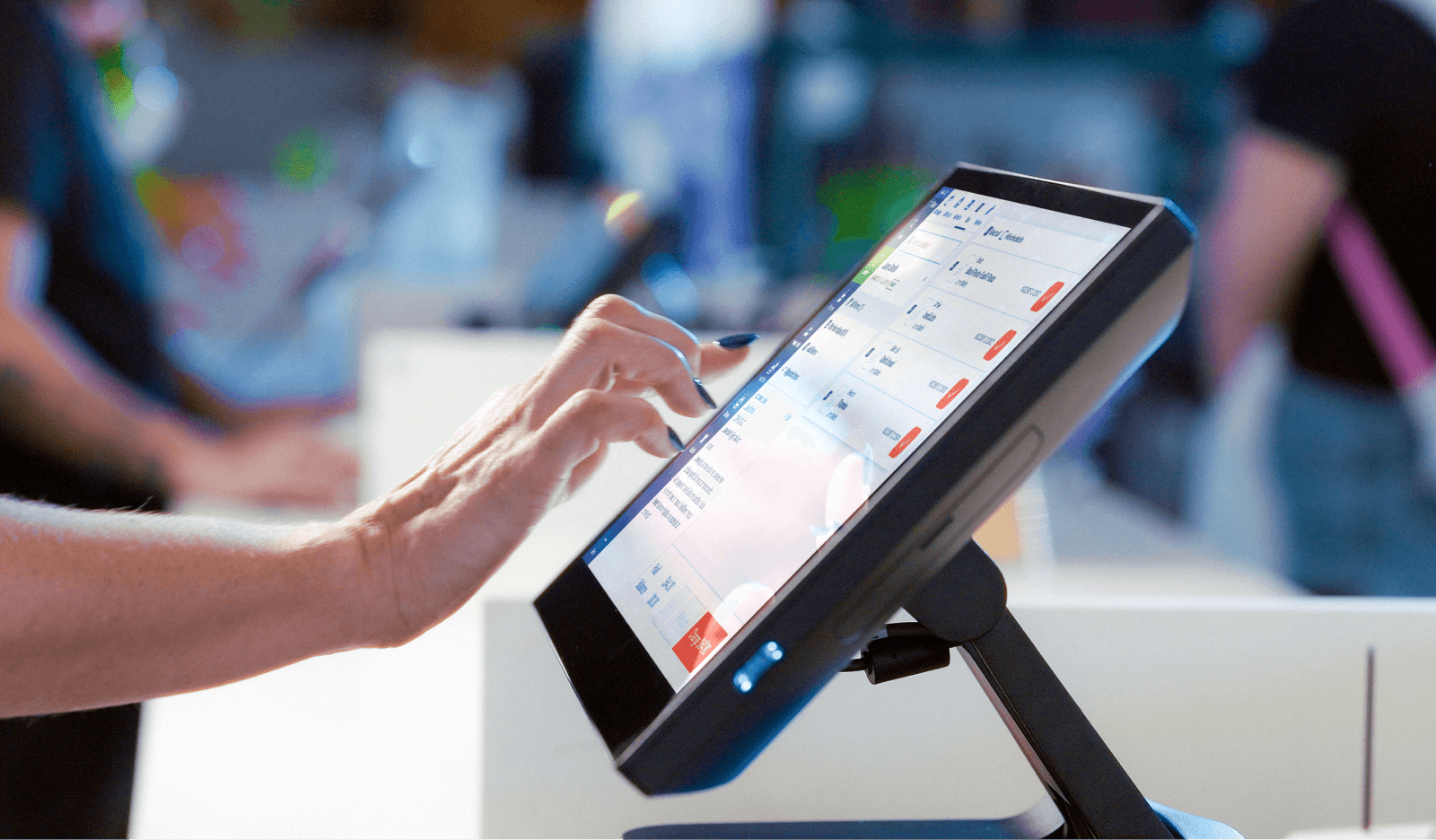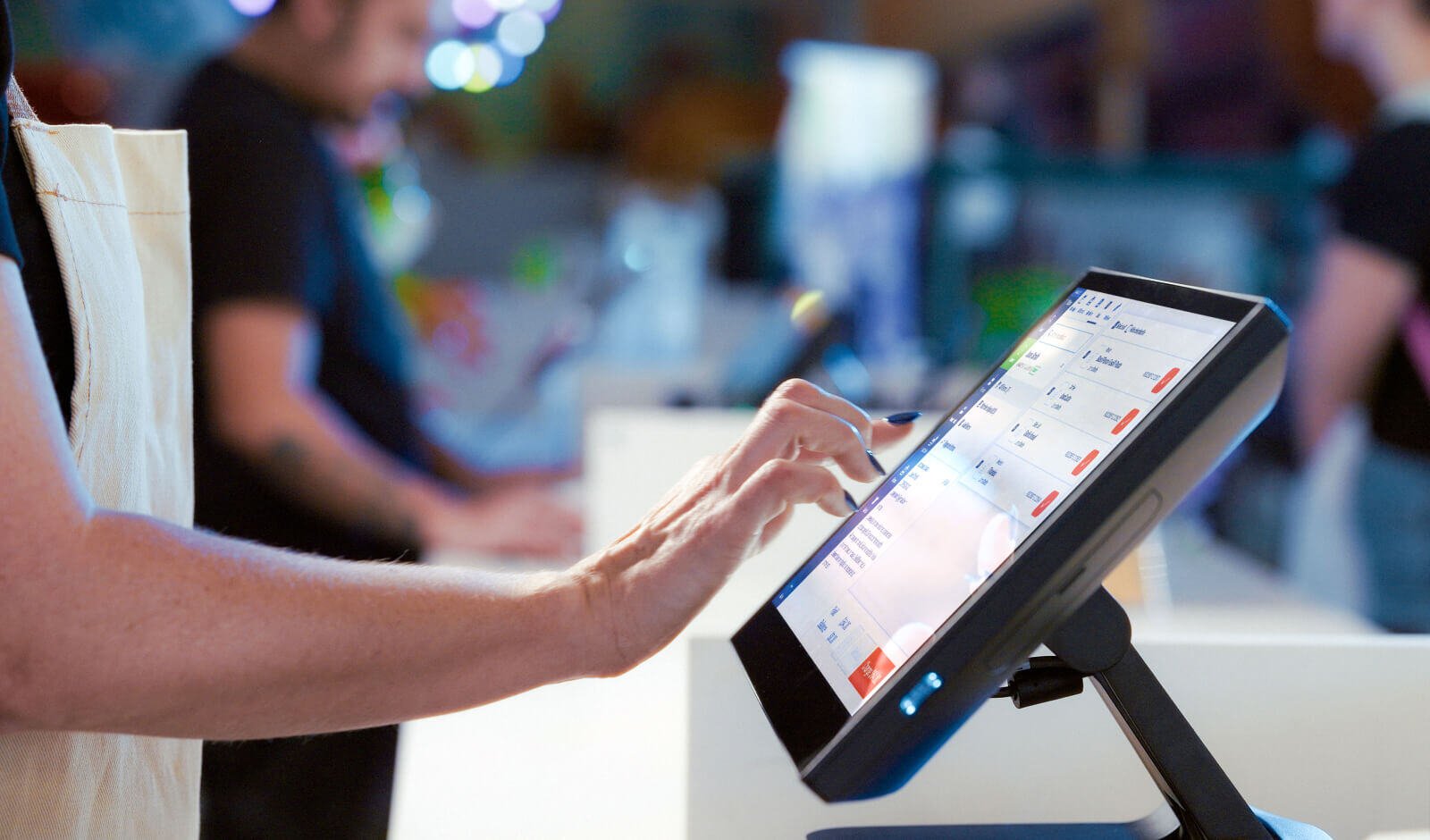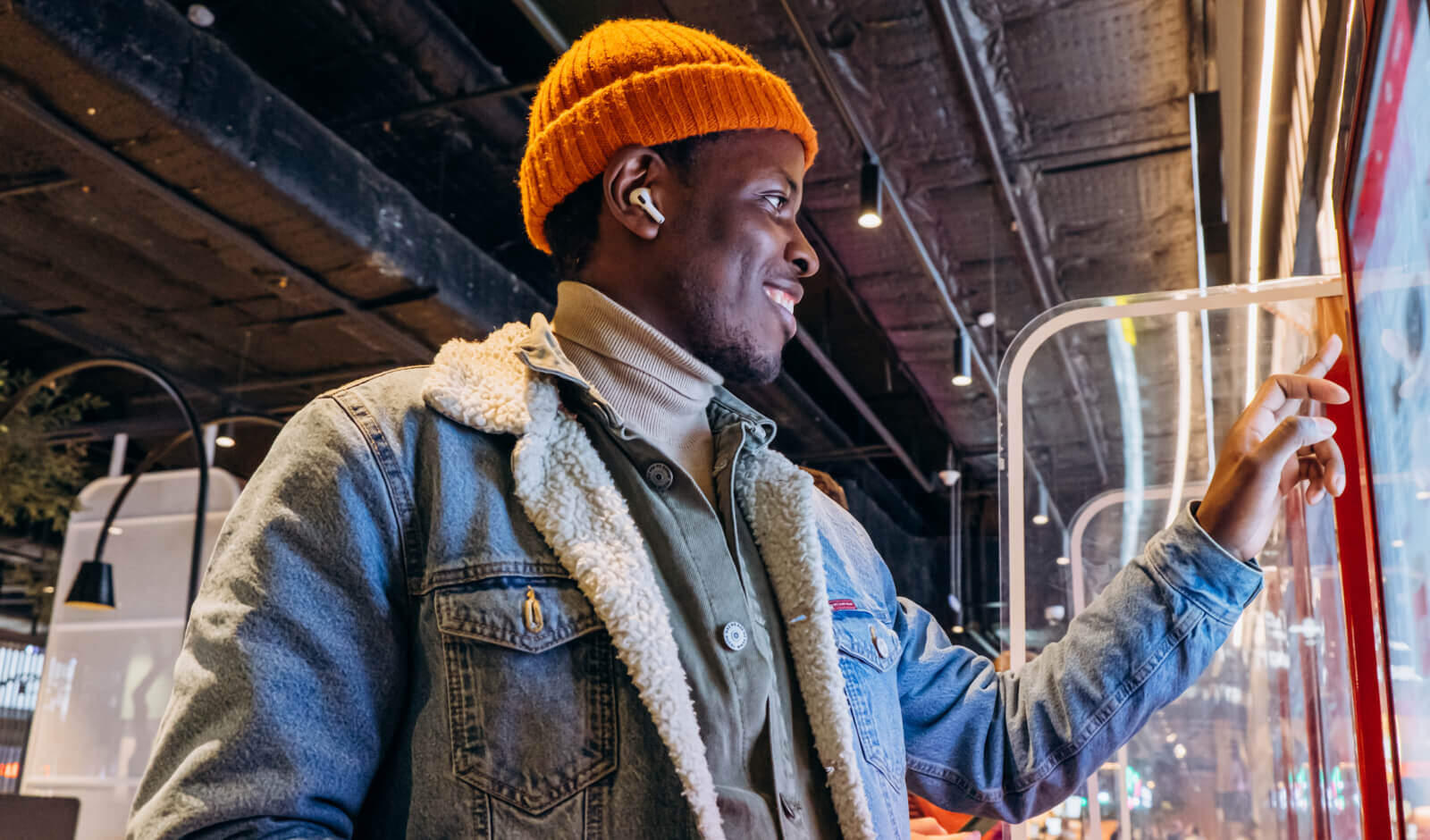We often hear from venue operators that increasing sales is always top of mind—but finding ways to boost revenue without overspending on marketing is a challenge. Since acquiring new guests is significantly more expensive than retaining existing ones, the key to sustainable growth is maximizing guest spending and encouraging repeat visits.
So, how can you increase revenue from the guests already at your venue? The answer is point-of-sale (POS) marketing—a strategy that leverages the checkout process to drive impulse purchases, upsells, and long-term guest engagement.
In this guide, we’ll explore what POS marketing is, why it works, and the simple steps you can take to optimize your point of sale software for maximum impact.
What is POS marketing?
POS marketing is a sales and promotional strategy that targets customers at the point of sale—whether at a front desk, self-service kiosk, or online checkout. The goal is to maximize revenue by influencing last-minute purchasing decisions, encouraging add-on sales, and driving repeat visits.
For attractions and entertainment venues, every guest interaction presents an opportunity to enhance the experience and increase spending. Traditional retailers have long optimized their checkout areas to influence last-minute purchases, and attractions can take this concept even further. By integrating digital upsells, personalized promotions, and loyalty incentives, venues can increase transaction values while improving the guest experience.
Point of sale (POS) vs. point of purchase (POP)
You’ve probably heard the phrases point of sale and point of purchase used interchangeably. While they overlap in some ways, it’s important to consider them two separate but complementary tools. In short:
- Point of sale (POS) refers to the exact location where a transaction occurs. This is the point where the customer completes the purchase, usually at a checkout counter or through a payment terminal.
- Point of purchase (POP) encompasses a broader area and includes any location within the retail environment where purchase decisions are made.
Read this next: Understanding Point of Sale (POS) vs. Point of Purchase (POP)
Why POS marketing works
If you’ve ever gone to the store for just one item but ended up adding a chocolate bar, drink, or even a random home decor piece to your cart while waiting in line, you’ve experienced POS marketing in action. It taps into consumer psychology, leveraging impulse purchases and last-minute decisions to drive more sales.
POS marketing works because it engages guests when they are already in a spending mindset. Whether purchasing admission tickets, renting equipment, or buying food and beverages, guests are more receptive to add-ons and upgrades at checkout.
- It captures high-intent buyers: Guests making a purchase are already in a spending mindset. For example, when a guest is about to purchase a general admission ticket, a well-placed upsell to a VIP experience can increase revenue per transaction.
- It encourages impulse buys: Small add-ons and upgrades feel like natural choices. A self-service kiosk at a family entertainment center can suggest adding a snack combo for just a few dollars more, increasing the per-guest spend.
- It enhances the guest experience: Personalized offers and quick transactions increase convenience. For example, a venue can use POS data to offer returning guests a personalized discount, making their visit feel more welcoming and tailored to their preferences.
- It boosts loyalty and return visits: Membership discounts and rewards encourage repeat business. A guest who purchases a day pass may be more likely to upgrade to a season pass if offered a small discount at checkout.
POS marketing for attractions venues
While retail stores focus on product placement at checkout, attractions venues can leverage POS marketing for ticketing upgrades, memberships, and experience-based purchases. Beyond promoting general merchandise, attractions can create unique experiences that drive impulse purchases, such as grip socks for trampoline parks or souvenir photos at adventure parks.
Guests are more likely to make a purchase when they’re already enjoying a great experience. Offering branded souvenirs, themed merchandise, or experience-enhancing add-ons makes it easy for them to take a piece of that experience home. Not only do these purchases create lasting memories, but they also serve as built-in marketing tools—as guests share their souvenirs and experiences with friends and family.
For example:
- Trampoline parks can promote branded grip socks at checkout, ensuring guests meet safety requirements while also driving additional revenue.
- Water parks can offer waterproof phone pouches or quick-dry towels as impulse purchases.
- Laser tag venues can highlight special promotions on exclusive equipment designs or glow-in-the-dark accessories for nighttime events.
By integrating these targeted offerings at checkout, attractions venues can increase per-guest spending while enhancing the overall experience.
Types of POS marketing: Digital vs in-person
Point-of-sale (POS) marketing falls into two primary categories: digital and in-person. Both play a vital role in increasing revenue, enhancing the guest experience, and driving impulse purchases.
Digital POS marketing
Digital POS marketing leverages technology to deliver targeted offers, upsells, and promotions through screens, kiosks, and mobile devices. These tools make transactions smoother and more efficient, reducing wait times and encouraging guests to spend more with minimal staff involvement. By automating promotions and upsells, venues can increase guest spending without additional operational overhead.
- Self-service kiosks can promote meal deals or bundle add-ons before checkout.
- Digital signage can highlight seasonal promotions or special event ticket sales.
- Mobile ordering allows guests to add food, beverages, or merchandise without waiting in line.
In-person POS marketing
While digital strategies provide automation and convenience, in-person POS marketing taps into impulse buying behaviors by placing high-margin products and offers in strategic locations.
- Physical checkout displays near the counter encourage last-minute purchases of high-margin items.
- Promotional signage showcases exclusive offers, such as “Add an extra hour of playtime for just $5!”
- Staff upselling helps guests discover relevant add-ons, such as upgrading a basic pass to a season membership.
How digital and in-person POS marketing work together
The most effective POS marketing strategies blend both digital and in-person approaches. Digital tools optimize efficiency and automation, while physical placements and staff interactions create a more engaging, personalized experience.
For example:
- A family entertainment center can use self-service kiosks for ticket sales while also placing physical signage near concessions to promote snack combos.
- A theme park gift shop can display limited-edition merchandise at checkout while offering a digital discount code for return visits.
- A mini golf course can use digital menu boards to highlight food combos while having staff promote membership perks at the counter.
By integrating both strategies, venues can capture more revenue at key moments in the customer journey while ensuring a seamless, guest-friendly experience.
Step-by-step guide to setting up POS marketing at your venue
Effective point-of-sale marketing can drive impulse purchases, boost revenue, and enhance the guest experience. But simply placing products near checkout isn’t enough—you need a strategic approach that aligns with your venue’s audience, purchasing patterns, and operational goals.
By following these five steps, you can create a high-performing POS marketing strategy that encourages guests to spend more while keeping your operations running smoothly.
Step 1: Define your target audience
Understanding your audience is the foundation of a successful POS marketing strategy. Different types of guests will have different purchasing behaviors, so it’s essential to tailor your offers to their needs.
Ask yourself:
- Who visits your venue? Families with young children, teens, thrill-seekers, or corporate groups?
- What are they most likely to purchase? Snacks, souvenirs, VIP experiences, or discounted return visits?
- What impulse buys make sense? A trampoline park might sell grip socks, while a water park might focus on branded towels and sunscreen.
By defining your audience and anticipating their needs, you can create a POS marketing approach that increases both guest satisfaction and spending.
Step 2: Leverage POS data and analytics
Your POS system is a goldmine of data that can help you refine your marketing efforts. Instead of guessing what sells best, use analytics software to guide your strategy. Here are some key types of data you can collect through a POS system:
- Sales data: Track what products are being sold, at what times, and in what quantities. This helps identify bestsellers and slow-moving items.
- Customer information: Collect customer details such as contact information, purchase history, and preferences. This data can be used for targeted marketing and personalized promotions.
- Inventory levels: Monitor inventory in real-time to ensure popular items are always in stock and reduce the risk of overstocking less popular items.
- Transaction details: Record the specifics of each transaction, including payment methods, transaction times, and any discounts applied. This can help in analyzing peak sales times and preferred payment methods.
- Employee performance: Track sales by employee to identify top performers and those who may need additional training or support.
- Promotion effectiveness: Evaluate how well different promotions and marketing campaigns are performing by analyzing changes in sales and customer behavior.
To help you leverage this data, ROLLER Analytics provides actionable insights through visual dashboards and detailed reports. With Analytics, you can save up to 125 hours per year on data analysis and increase your operating income by up to 2.5%.
Step 3: Add POS marketing to in-person and online checkouts
Once you understand your audience and sales trends, it's time to select the right POS marketing tactics. The best strategies create convenience for guests while increasing revenue for your venue.
Here are some ideas for how to implement POS marketing both online and in-person:
- Upsells and bundles: Encourage guests to upgrade their experience by offering VIP passes, fast-track access, or bundled deals during the digital checkout process.
- Required gear for participation: Attractions that require special items—such as grip socks for trampoline parks or gloves for ice-skating rinks—should place these prominently at checkout to ensure guests purchase what they need.
- Online checkout cross-sells: Automatically suggest additional purchases based on what’s in the guest’s cart, such as adding a snack or branded merchandise before finalizing payment.
- Food and beverage add-ons: Food and beverage sales are among the most effective POS marketing strategies because they meet an immediate need. In fact, offering mobile food and beverage ordering can increase spend per guest by 33%, reducing wait times and improving convenience.
- Memberships at checkout: Prompt guests to sign up for a loyalty program, season pass or annual membership while completing their purchase, offering perks like discounts or exclusive access.
- Gift cards: Feature gift cards near the point of sale to encourage guests to buy for friends and family, increasing future visits.
- Digital signage upsells: Use self-service kiosks and online ticketing to highlight limited-time offers, upcoming events, or special experiences.
- Physical ads and signage: Use posters, banners, or checkout counter displays to promote add-ons, special deals, or future events.
- Strategic product placement: Display small, high-margin items near checkout, such as plush toys, hats, or keychains.
- Branded merchandise: Sell venue-branded t-shirts, hoodies, or water bottles at checkout to boost brand visibility and drive additional revenue.
Step 4: Train staff to promote POS-exclusive offers
Your employees are one of your best sales tools—when trained effectively, they can help increase guest spending through simple recommendations. By empowering staff with the right sales techniques, you can boost conversions and make guests feel like they’re getting more value out of their visit.
- Encourage suggestive selling. Have staff offer upgrades and bundles, such as “Would you like to add a drink for just $2 more?”
- Provide clear training. Ensure that frontline staff understands the value of POS marketing and how to promote offers naturally.
- Offer staff incentives. Reward employees who successfully upsell memberships, add-ons, or premium experiences.
With a smart POS system, venues can automate many POS marketing strategies, making it easy to increase sales without additional effort from staff.
Read more: Maximize Revenue with Smart Upselling: A Comprehensive Guide for Attraction Venues
Step 5: Track performance and optimize your POS marketing efforts
Like any marketing strategy, POS marketing should evolve based on performance data. Use your POS system’s reporting tools to analyze what’s working—and where there’s room for improvement.
To optimize your POS marketing, follow these tips:
- Review sales reports. Identify which POS promotions generate the most revenue.
- Adjust signage and pricing. If an offer isn’t performing well, tweak the messaging, visuals, or price points.
- Test different promotions. Try limited-time discounts, bundle deals, or exclusive offers to see what resonates most with guests.
By continuously refining your approach, you can ensure that your POS marketing strategy stays effective—driving higher guest engagement, sales, and repeat visits.
How will I know if POS marketing is working?
If you’re using a POS system for sales, then the reporting functionality will shed light on how well your POS marketing is working. By collecting sales data automatically, you can quickly pull up accurate reporting that lets you track sales by product type and time period, allowing you to filter results for greater insights.
For example, you can work out how certain F&B promotions are tracking and what your most popular point of sale items might be.
Also, keep an eye on your social media, review sites, and any other guest feedback to see what’s being talked about—this can be an excellent way to gain firsthand insights into the types of products, services, and activities that might have greater success at the checkout.
Future-proof your POS strategy
POS marketing is one of the most effective ways to increase revenue while also improving the guest experience and operational efficiency. A well-optimized POS strategy ensures that every checkout interaction becomes an opportunity to increase sales, boost engagement, and drive repeat visits.
By integrating digital and in-person POS marketing strategies, leveraging data-driven insights, and training staff to maximize upsell opportunities, venues can create a seamless and profitable checkout experience that benefits both guests and operators.
The role of technology in POS marketing
As guest expectations evolve, technology is playing an increasingly crucial role in shaping the future of POS marketing. Mobile-first experiences, seamless payment integrations, and smart upsell features are refining how venues engage guests at checkout. Modern POS systems do more than process transactions—they streamline operations, optimize guest flow, and enhance the overall experience while boosting revenue.
With ROLLER’s all-in-one venue management platform, you can:
- Increase sales with an industry-leading POS system: Sell tickets, food, beverages, and merchandise from a single system to drive higher revenue per guest.
- Optimize the guest experience: Reduce bottlenecks at check-in, speed up purchases, and allow guests to enjoy their visit without unnecessary delays.
- Enhance operational efficiency: Automate ticketing, track inventory in real time, and seamlessly integrate with food and beverage and retail sales for a smoother workflow.
- Leverage powerful analytics: Use POS data to understand guest behavior, identify top-selling items, and optimize marketing strategies.
- Offer flexible, secure payment options: Accept contactless payments, mobile wallets, and Buy Now Pay Later (BNPL) solutions for frictionless transactions.
- Streamline multi-venue operations: Whether managing one location or multiple venues, ROLLER’s cloud-based POS system allows you to oversee operations from anywhere.
Ready to enhance your POS marketing and maximize every transaction? Book a demo with ROLLER today.
Frequently asked questions
What is POS marketing?
What is an example of a point of sale?
What is a point of sale strategy?
How does POS marketing drive more sales?



